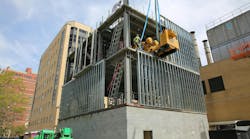The maintenance mantra in many plants is “Keep product flowing out the door.” That is an important mission of maintenance, but it shouldn’t be its sole mission.
The following scenario is a good example. A process at one plant involved spraying volatile compounds on parts and then oven-baking them. The oven had a fire suppression system with sensors, controls, and a bank of carbon dioxide tanks. The insurance company required monthly checking of the pressure gauge on each tank, and for the pressure to be recorded on a tank tag.
Sometimes, the inspecting technician would glance at all the gauges but not update all the tags. There were gaps in the record, and these always caused issues with the insurance company. The solution was to photograph each gauge, and keep the time-stamped photos in the computerized maintenance management system (CMMS). Also, a work order to do this was automatically generated each month by the CMMS.
In addition to the insurer, a given plant may need to comply with requirements from an alphabet soup of organizations such as EPA, FDA, GMP, ISO, OSHA, or SHA. Some equipment warranties are contingent upon specific maintenance practices being performed; you can use your CMMS to schedule the work and store the data.




